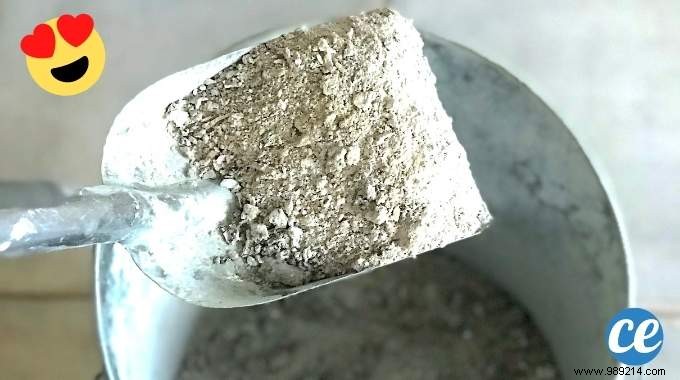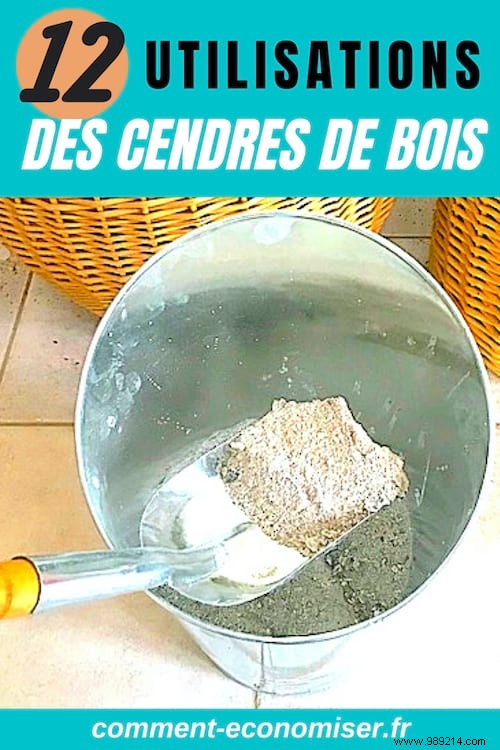
Do you have a fireplace at home?
Then I'm sure you have a lot of ashes you don't know what to do with!
One would think that this ash is totally dead and no longer useful...
But that's without counting on Mother Nature who always knows how to give objects a second life!
From now on, don't throw away that precious white powder.
Here are 12 magical uses of wood ash for the garden and home that will blow your mind . Watch:

Only certain plants love acidic soil.
This is particularly the case with blueberries, peppers, azaleas and hydrangeas.
The others largely prefer soil with a Ph between 6 and 7.5.
This is the ideal rate, because the nutrients in fertilizers are easily dissolved in water and therefore better absorbed by the roots of the plant.
Acidic soil (a pH below 6) means plants won't get enough nitrogen, phosphorus, or potassium.
Alkaline soil (a pH above 7.5) means plants won't get enough iron, manganese, and phosphorus.
To find out if your soil is too acidic, I advise you to use this trick.
Wood ash contains up to 70% calcium carbonate and can be used as a lime substitute to increase soil Ph.
Just put 10 kg of ash per 100 m2 of land, leave to act, and test your soil again.
In the garden, slugs and snails wreak havoc!
They devour all your young shoots, your seedlings, not to mention strawberries and salads...
Looking for a natural slug killer?
Sprinkle wood ash evenly around each plant or around the vegetable patch.
Why ? Because the ash has a dehydrating effect which prevents these critters from stepping on it.
On the other hand, avoid any direct contact of the ashes with your plants. And remember to reapply after each rain.
Put wood ash in your compost pile to increase its potassium level.
In fact, potassium is an essential nutrient for the flowering and fruiting of your plants.
Attention, the addition of ashes in the compost must be done in moderation, approximately every 15 cm of layer of compost.
Wood ashes are alkaline and too much of it will raise the pH value, which will damage your plants (especially those that like acidic soils).
Crushed eggshells are an excellent source of calcium in the garden...
...but wood ash is even more effective, as it contains quite a lot of calcium carbonate.
Sprinkle the wood ash sparingly over the soil and turn it over.
Apples, carrots, tomatoes, potatoes, cauliflower, broccoli, lettuce, Brussels sprouts, cabbage and celery will love this!
This wood ash-based fertilizer is ideal for preventing or correcting potassium deficiencies in plants.
How do we know that plants lack potassium?
They have brown spots, the leaves turn yellow between the veins, curl at the ends or even stop growing.
And some plants, such as tomatoes, potatoes, apples, raspberries, currants and sugar beets, often have this type of deficiency.
To make this fertilizer from wood ash, place 2.5 kg of ash in a cloth bag (like an old pillowcase) and seal it.
Place the bag of ashes in a 150 liter bin filled with water and leave to infuse for several days.
Once infused, pour 250ml of this mixture around your plants.
Obviously, we can adapt the quantities to make it easier in a small garden!

Wood ash is also super effective for lawns!
Indeed, a light dusting of ashes on the lawn helps to keep the grass green.
After sprinkling the ash on the lawn, just remember to water it to prevent the nutrients from being blown away.
Like many birds, hens need to roll in the dust.
Why ? Because it keeps them clean and gets rid of parasites like lice and mites.
So if you have chickens in your garden, don't forget to give them a box with sand and ashes, you'll see, they'll love you!
Check out the trick here.
The first soaps were made by the Babylonians around 2800 BC.
They used a mixture of animal fat and wood ash.
When the ashes are boiled in fresh water, it creates lye (potassium hydroxide) which is then mixed with animal fats or vegetable oils to make a mild soap.
Add a little salt to the mixture when pouring into the molds to make firmer bars of soap.
Learn how to make wood ash laundry here.
The widespread use of salt (sodium chloride) to melt ice and snow leads to serious soil pollution.
Every year, tons of salt are dumped on the roads and end up in our rivers and groundwater.
Salt is also very toxic to plants and animals.
To avoid this, wood ash is THE natural solution for melting snow and ice.
Because wood ash contains potash, a much greener type of salt than chloride-based salts, it melts ice and snow in no time.
All you have to do is scatter it on the alleys and sidewalks.
Unlike salt, it does not corrode surfaces like concrete or metal, does not damage the pads of our four-legged friends and does not damage plants in the spring.
Wood ash is mildly abrasive, so it can be used to polish tarnished silverware, dull metals, or dirty glass.
Take a cup of ash and add a little water to get a thick paste.
Put on rubber gloves and spread this paste on all your tarnished objects.
Let sit for a few minutes before wiping off with a clean cloth.
Use a little elbow grease to buff and shine.
Like baking soda, wood ash is alkaline and can absorb and neutralize bad odors.
Try putting some wood ash in a small bowl in the fridge.
It also works in a room that smells bad where you have just repainted the walls for example.
You will be surprised to see the bad odors disappear quickly!
Remember to replace the ashes every 4/5 days to keep it effective.
Oil stains in the garage are very common and often impossible to clean.
Since wood ash is a desiccant, it can be used to absorb and clean oil leaks from a car.
Indeed, ash has the power to remove stains from porous surfaces such as stone, cement and asphalt.
Nothing could be simpler!
Sprinkle a little ash on the stain and leave for a few minutes.
All you have to do is sweep the stains away.
Wood ash is composed of calcium, potassium, phosphorus and magnesium.
It also contains traces of iron, manganese, sodium, boron, zinc, copper and molybdenum.
Because it is created by burning plant matter, it contains many elements necessary for plant growth.
It is for this reason that it has long been used by gardeners and farmers to stimulate the soil naturally.

- Use only ashes from wood without chemicals. No pressure treated wood, painted wood, charcoal, briquettes or commercial products like slow burning wood logs.
- Know that the ashes of hardwoods like oak and maple have five times more nutrients than softwoods.
- Although the ashes feel cold to the touch, buried embers can stay hot for days. So be careful, and store wood ashes in a metal bucket and set it on a non-flammable surface like concrete.
- When handling wood ashes, always wear gloves, eye protection and, if the particles are particularly fine, a dust mask. It is recommended to take the same precautions with wood ashes as with bleach, another very alkaline substance.
- Never combine wood ash with nitrogen fertilizers such as urea, as this will produce ammonia.
- Do not use wood ash on seedlings. Wood ash contains salts that "grill" young plants, no pun intended.